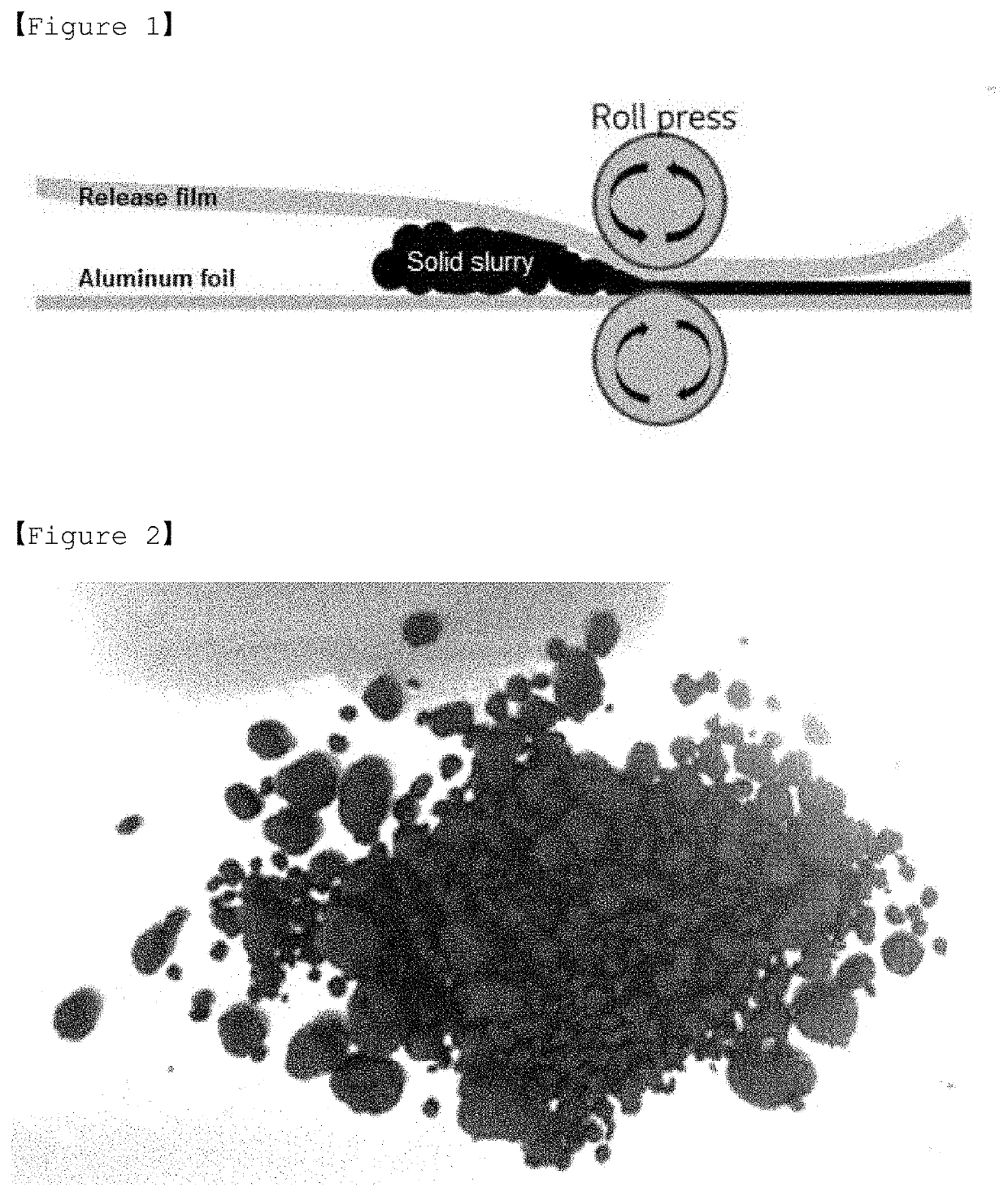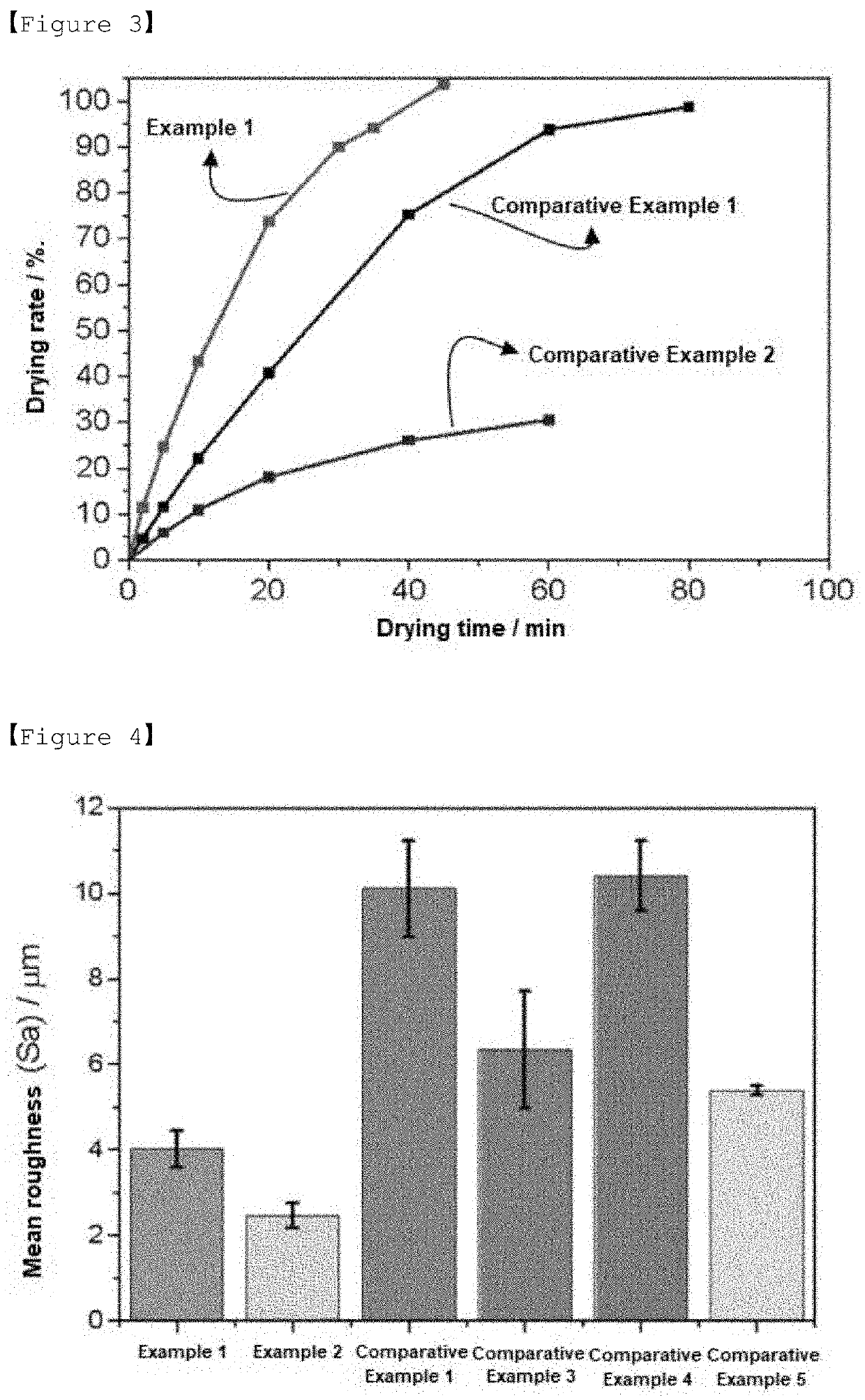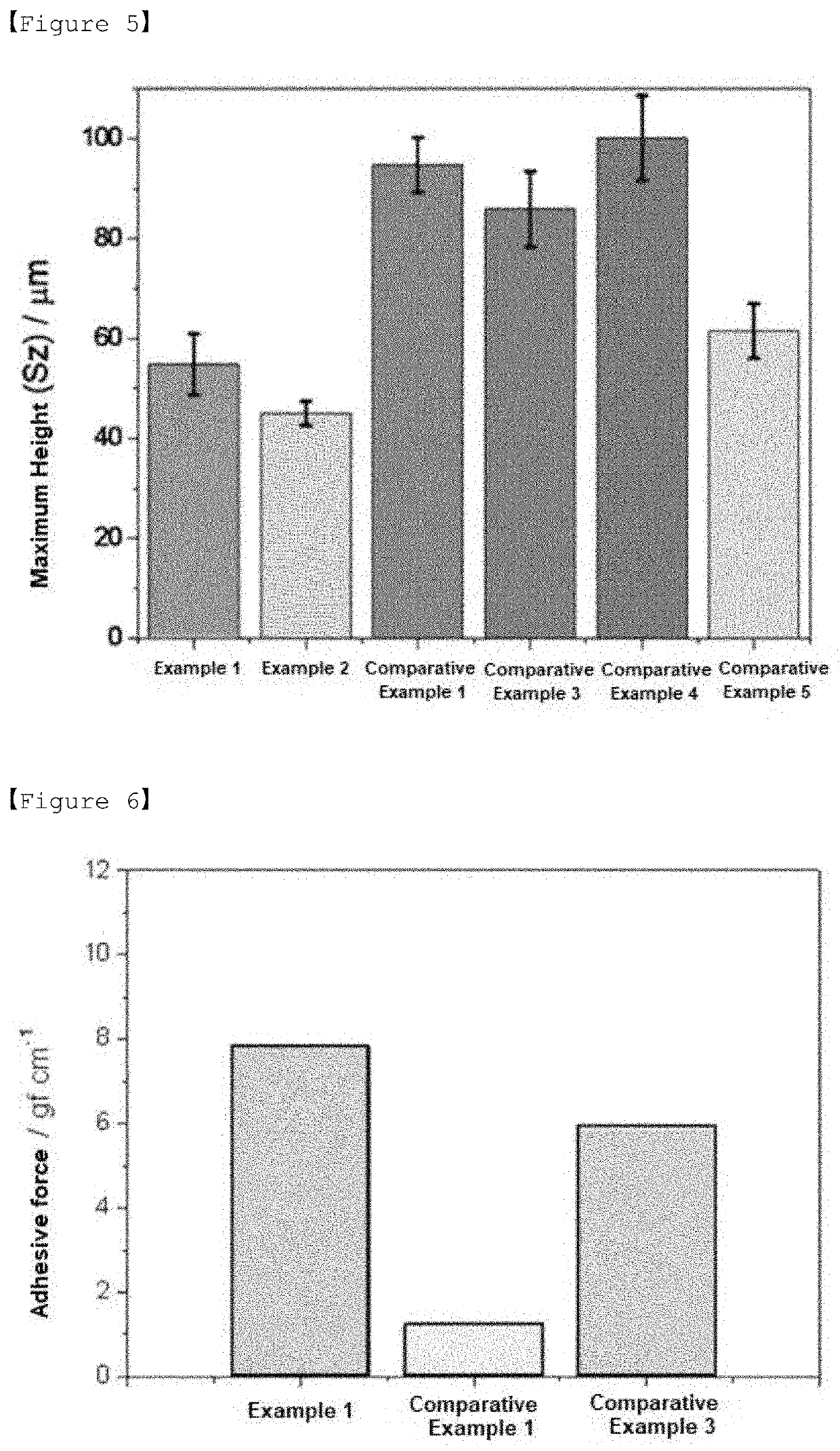Positive electrode for lithium-sulfur battery and method for manufacturing same
a lithium-sulfur battery and positive electrode technology, which is applied in the manufacturing process of electrodes, cell components, impregnation manufacturing, etc., can solve the problems of difficult manufacturing of positive electrodes through the existing coating process, long heating and drying process time, and low production speed of positive electrodes, etc., to achieve excellent surface properties, excellent adhesive force, and small irregularities
- Summary
- Abstract
- Description
- Claims
- Application Information
AI Technical Summary
Benefits of technology
Problems solved by technology
Method used
Image
Examples
example 1
[0111]97 wt. % of sulfur-carbon composite (S:C=70:30 (weight ratio)) and 3 wt. % of Li-CMC (Lithium-Carboxymethyl Cellulose) as a binder in the form of solid powder were mixed, and then water was added thereto to prepare a slurry of positive electrode active material having a solid concentration of 60 wt. %.
[0112]The prepared positive electrode active material slurry was placed on one side of an aluminum current collector, and then a PET release film (Mitsubishi, MRF-125, thickness 125 μm) was covered on the slurry to prepare a structure having the order of current collector-slurry-release film. Thereafter, the structure was put into the Roll-Press and the process of compression was performed while adjusting the roll gap to 120 μm.
[0113]After compression, the release film was removed from the structure, put in an oven, and dried by heating at a temperature of 50° C. to manufacture a positive electrode having a porosity of 63% and a sulfur loading amount of 3.65 mAh / cm2.
example 2
[0114]Sulfur-carbon composite (S:C=75:25), carbon fiber as a conductive material, and Li-CMC (Lithium-Carboxymethyl Cellulose) as a binder in solid powder form were mixed in a weight ratio of 92:5:3, and water was added thereto to prepare a slurry of positive electrode active material having a solid concentration of 55 wt. %.
[0115]Except for the method of preparing the slurry of the positive electrode active material, the same method as Example 1 was performed to manufacture a positive electrode having a porosity of 63% and a sulfur loading amount of 3.4 mAh / cm2.
example 3
[0123]The positive electrode prepared in Example 2 and the negative electrode of lithium metal having a thickness of 45 μm were positioned to face each other, and then, a polyethylene separator having a thickness of 20 μm and a porosity of 46% was interposed between the positive electrode and the negative electrode.
[0124]In addition, as the electrolyte, 1M LiTFSI and 3 wt. % of lithium nitrate (LiNO3) was injected while using 1,3-dioxolane (DOL) / dimethoxyethane (DME) (1:1, v / v) as the solvent to manufacture a coin cell type lithium-sulfur battery.
PUM
| Property | Measurement | Unit |
|---|---|---|
| porosity | aaaaa | aaaaa |
| temperature | aaaaa | aaaaa |
| height roughness | aaaaa | aaaaa |
Abstract
Description
Claims
Application Information
 Login to View More
Login to View More - R&D
- Intellectual Property
- Life Sciences
- Materials
- Tech Scout
- Unparalleled Data Quality
- Higher Quality Content
- 60% Fewer Hallucinations
Browse by: Latest US Patents, China's latest patents, Technical Efficacy Thesaurus, Application Domain, Technology Topic, Popular Technical Reports.
© 2025 PatSnap. All rights reserved.Legal|Privacy policy|Modern Slavery Act Transparency Statement|Sitemap|About US| Contact US: help@patsnap.com



